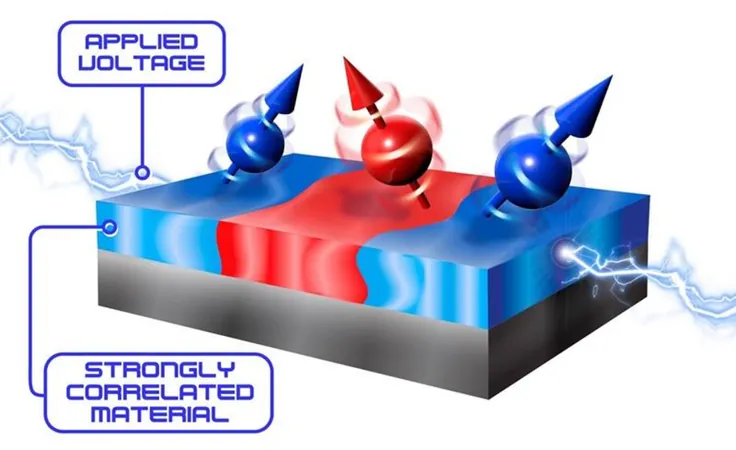
Unlocking the Future of Computing: How Voltage Can Control Magnetism in Revolutionary Spintronic Circuits
2025-01-16
Author: Li
In an exciting breakthrough, researchers have unveiled a groundbreaking method to manipulate the magnetic behavior of quantum materials through the application of voltage. The focus of their study is lanthanum strontium manganite (LSMO), a material that switches from magnetic and metallic at low temperatures to non-magnetic and insulating as it warms up. This unique property allows experts to alter its magnetic characteristics simply by applying voltage—a feat previously thought impossible.
Published in the prestigious journal Nano Letters, this research reveals a fascinating layer of complexity within quantum materials, opening doors to potential energy-efficient applications in information processing. Traditionally, magnetic properties remain constant despite external voltage changes; however, scientists discovered that LSMO can be divided into distinct regions, each exhibiting unique magnetic traits dependent on the applied voltage.
This innovation bears significant implications for developing neuromorphic circuits, which are inspired by the brain’s information processing abilities. Neuromorphic devices aim to replicate the brain’s efficiency in computing, leading to more advanced AI applications. Beyond just tuning magnetism, LSMO also allows adjustments in its electrical resistance, making it a double-duty player in the quest for advanced technology.
To unveil these findings, researchers utilized a technique known as ferromagnetic resonance. This method measures the material's response to electromagnetic waves, observing that the materials exhibit peaks when the magnetization's precession frequency aligns with an incoming wave's frequency. The results were astounding: multiple peaks corresponded to various magnetic phases within LSMO, with small alterations in voltage leading to significant shifts in oscillation frequencies.
The implications of this groundbreaking discovery are vast. Not only does LSMO serve as a potential cornerstone for developing neuromorphic devices, but it also paves the way for smarter and more efficient spintronic applications. As we stand on the brink of a technological revolution, this research signifies a pivotal moment in our quest for computers that mimic the incredible capabilities of the human mind.
In summary, the ability to tune the magnetic properties of quantum materials like LSMO with voltage could transform the landscape of computing, leading to devices that are not only faster but also far more energy-efficient. The future is here, and it promises a remarkable leap forward in how we process information!


 Brasil (PT)
Brasil (PT)
 Canada (EN)
Canada (EN)
 Chile (ES)
Chile (ES)
 Česko (CS)
Česko (CS)
 대한민국 (KO)
대한민국 (KO)
 España (ES)
España (ES)
 France (FR)
France (FR)
 Hong Kong (EN)
Hong Kong (EN)
 Italia (IT)
Italia (IT)
 日本 (JA)
日本 (JA)
 Magyarország (HU)
Magyarország (HU)
 Norge (NO)
Norge (NO)
 Polska (PL)
Polska (PL)
 Schweiz (DE)
Schweiz (DE)
 Singapore (EN)
Singapore (EN)
 Sverige (SV)
Sverige (SV)
 Suomi (FI)
Suomi (FI)
 Türkiye (TR)
Türkiye (TR)
 الإمارات العربية المتحدة (AR)
الإمارات العربية المتحدة (AR)